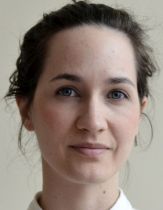When radiologists provide diagnoses, they use a combination of theoretic knowledge and pattern recognition based on their experience. Pattern recognition is a very complex process, subjective in nature and difficult to teach as it is based on previous exposure to similar cases. Enhancing gliomas and primary central nervous system lymphomas are the most common primary intra-axial tumors of the brain and differentiation between them can be challenging. One of the most important features that radiologists use to differentiate between the two is the texture on T1 postcontrast images. We had a project in mind to make the process of differentiating these tumors more objective by using texture analysis. In 2016, during my fellowship at the University of Toronto, I attended a very inspiring lecture on machine learning by Paul Dufort, and we discussed how it would be very interesting to add a machine learning component to the project.
We explored the accuracy of a support vector machine (SVM) in differentiating lymphomas and gliomas and whether it exceeded human pattern recognition capabilities. We were very surprised by the high accuracy of the SVM, which was noninferior to that of the neuroradiologist, even with a relatively small training dataset. There were a small number of cases of particular interest in which the machine provided an accurate diagnosis while the radiologists made an incorrect diagnosis. The work was very well received at the ASNR 2017 Annual Meeting. In particular, it was nominated for the Cornelius G. Dyke Memorial Award and received an Outstanding Presentation Award. Following the presentation, many radiologists approached us to discuss practical implementation and debate the future of radiology.
Given that SVM classification systems benefit from extensive training, a limitation of our study was the number of available cases with which to train the machine. As we move forward with this line of research, the availability of larger datasets would likely improve the performance of the classifier, as well as allow us to assess the value of adding features beyond texture on T1 postcontrast images (eg, perfusion data, diffusion data, patient demographics, and tumor location). The use of larger datasets would also allow the inclusion of a larger variety of differential diagnoses in the algorithm.
